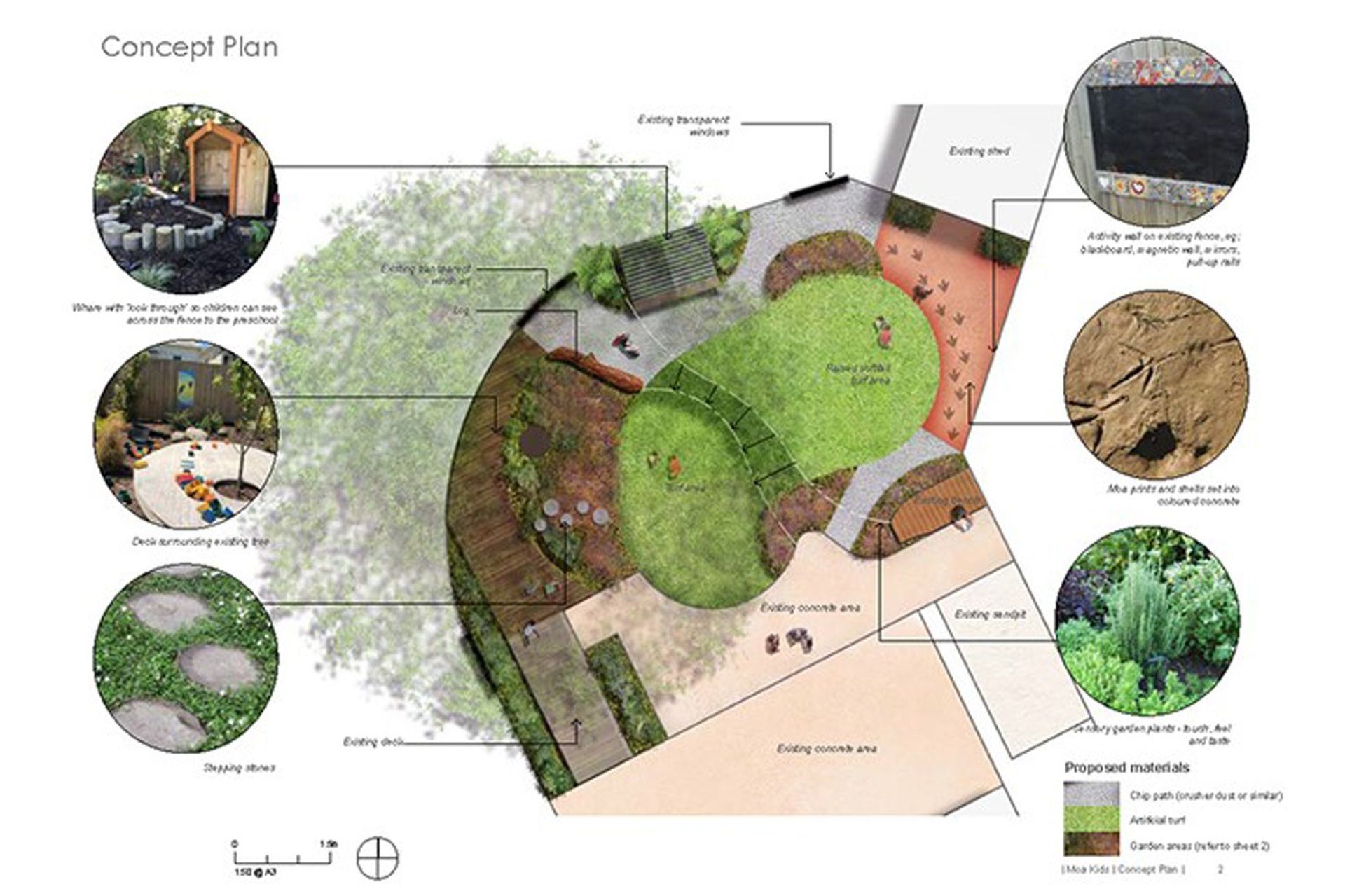Moa Kids Nursery Garden


Moa Kids Nursery Garden
How to design a playspace that meets the diverse needs of children aged six months to two years, and supports the kindy's focus on child-led play in a natural environment?
Moa Kids is a not-for-profit community-based preschool in Redcliffs, Christchurch. The centre’s philosophy is based around the community and the importance of self-choice and free-play, in which nature plays a big role.
Kylie Boivin has led the refurbishment of the centre’s much-loved nursery garden for the 0-to-2 years age group.
The team engaged with teachers, the Board of Trustees and the children to inform the concept. Kylie says, “The most rewarding part of this project has been the input from the passionate teachers, and being able to help put their vision into reality by incorporating ‘teaching opportunities’ into the design and ways of inspiring delight in the children.”
“This age group encompasses an incredibly wide range of physical abilities from babies who sit and watch, crawlers who love to explore and young toddlers who are very physical,” Kylie says, “so the garden needs to cater to these diverse needs.”
Many of the children are walking and running; and very capable on bikes and scooters, so providing a dedicated active circuit around the perimeter of the space encourages movement through these areas, thus allowing for more passive and relaxed uses in other spaces.
To withstand the impact of dozens of little feet each day, artificial turf provides a soft-fall area in the centre, and a raised part of the lawn allows for changable activities. A mature tree was retained, and the concept minimises construction disturbance to the root zone of the tree by building surfaces above the natural ground level and creating a timber deck to protect the root zone.
The propsed plant palette encourages exploration through a sensory garden of fragrant and edible species, including lavender, rosemary, sage and thyme; along with strawberries and nasturtium.
“The garden also aims to reflect our local community and ink to local history with Moa footprints and a Wharenui,” Kylie explains. “We also wanted to include as many natural elements as possible – like logs and stepping stones.”
Kylie says this project has been a change of pace, as over the past five years, much of the Christchurch design team’s work has been on large projects, largely stemming from the earthquake recovery initiatives.
“It’s lovely to have such a direct connection and interaction with the kids. Plus, smaller projects like this provide an opportunity for younger staff to gain valuable experience in project management and leadership,” says Kylie.
Though the final construction has been put on hold due to the Covid-19 lockdown, the construction team was able to make a start and the sense of excitement was evident.
“The kids lined up chairs on the other side of the fence, safely out of the way and spent much of the day watching the team clear the site and get it ready.”
